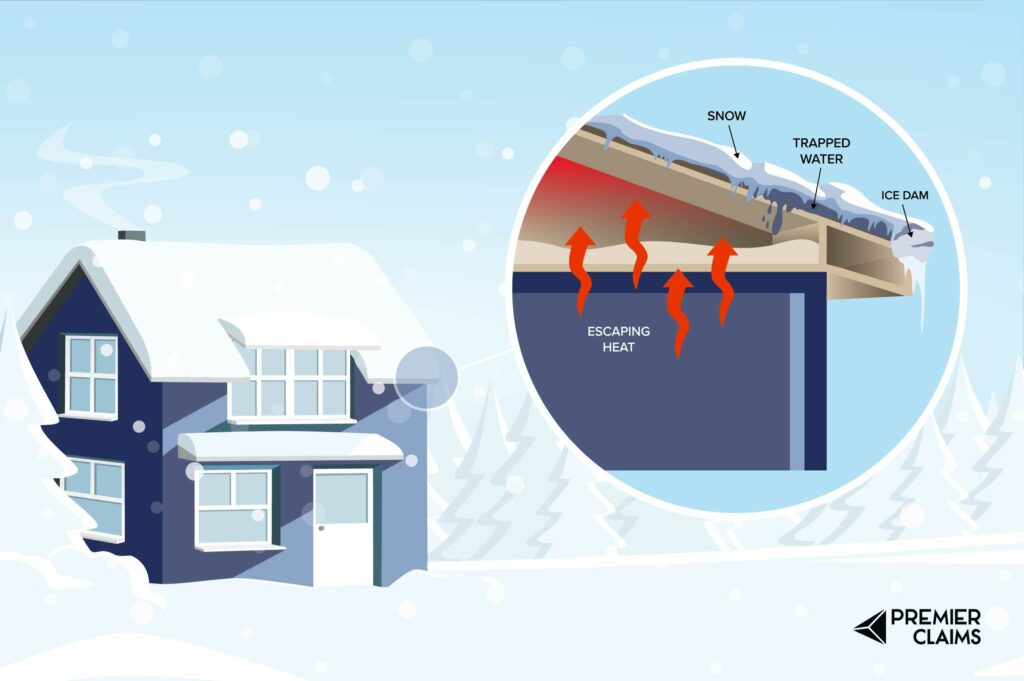When it comes to your property’s safety, smoke alarms serve as vigilant guardians against fire hazards. However, an unexpected scenario unfolds when these guardians sound an alarm not for fire, but for water. Explore the intriguing link between water leaks and smoke alarms as we uncover the silent signals that may indicate potential water damage in your home.
Smoke Alarms & Water Leak Connection
Understanding the basics of smoke alarms is important when it comes to properly protecting your property. Various mechanisms trigger alarms, each mechanism aims to detect particles linked to events involving fire or water.
With varying temperatures in winter months, water can be a silent intruder, finding its way through hidden pathways. Melting snow, leaking from the attic or other sources, can trigger smoke alarms by disrupting the alarm’s sensors.
Signs Your Smoke Alarms Detect Water
Consistent smoke alarms may point to water-related issues. However, there is a difference between occasional false alarms and persistent signaling, emphasizing the need for investigation.
Identifying irregularities in alarm patterns is key to understanding potential water leaks. Occasional false alarms may result from environmental factors. Learn to recognize when alarms sound without visible smoke, as these anomalies could be indicators of underlying water damage.
Investigating Water Leaks and Smoke Alarms
Checking the Attic
The attic is a common culprit for water leaks. Uncover effective methods to inspect the attic, identifying signs of water intrusion that may trigger smoke alarms. If you’ve encountered substantial snow accumulation accompanied by strong winds, it’s advisable to inspect your attic for any snow buildup that may have infiltrated your structure through the roof ventilation. Ensure the integrity of your property by addressing potential issues caused by severe snowfall and wind conditions in a timely manner.
Tracing Plumbing Issues
Water leaks can stem from plumbing issues. Understand how to trace and address plumbing-related leaks that may be silently activating your alarms. Typically, plumbing problems manifest through visible signs such as water and moisture seeping through walls and ceilings. If you suspect that plumbing issues concealed within the walls are triggering your smoke alarms, it is advisable to shut off your main water line and consult with a professional who can thoroughly investigate and address the underlying problem.
Prevention and Regular Alarm Maintenance
Ensuring your smoke alarms undergo regular maintenance is important for the overall safety of your property. Explore tips to optimize their functionality, hoping to minimize the risk of false alarms triggered by water detection:
Monthly Testing
Conduct a monthly test of each smoke alarm to determine their functionality. Most alarms have a test button- simply press and hold until the alarm sounds.
Battery Replacement
Change the batteries at least once a year, even if they seem functional. Consider an annual routine, like during daylight savings time, to create a consistent schedule. Ensure you have additional batteries readily available to avoid inconvenient situations, especially if they deplete unexpectedly in the middle of the night.
Dust and Debris Removal
Regularly clean your smoke alarms from dust and debris. Use a soft brush or vacuum attachment to gently remove any buildup that could affect sensor sensitivity.
Functional Testing
Check the functionality of interconnected alarms. If one alarm is triggered, ensure all interconnected units respond simultaneously.
Alarm Placement
Alarms should be placed strategically in key areas like bedrooms, hallways, and common spaces. Follow manufacturer guidelines for optimal placement.
Replace Outdated Alarms
Smoke alarms have a lifespan of around 10 years. If your alarms are outdated, consider replacing them with newer models to benefit from enhanced features.
Professional Inspection
Schedule periodic professional inspections to assess the overall health of your smoke alarm system. Professionals can identify potential issues that might go unnoticed during routine checks.
Keep Surroundings Clear
Maintain a clear space around smoke alarms. Avoid placing objects close to them to allow for optimal air circulation and sensor performance.
Preventing Water-Induced Alarms
Implement preventive measures to avoid water-related false alarms. From roof inspections to proactive plumbing checks, these strategies will help maintain a dry and secure home.
By recognizing signs, investigating potential sources, and implementing preventive measures, property owners empower themselves to safeguard their homes. Stay vigilant, conduct regular checks, and trust Premier Claims for assistance in navigation unexpected scenarios. Your property’s safety depends on your awareness and proactive care, and we are here to guide you along the way.

